The word “selfie” has definitely entered our daily vocabulary thanks to the “smartphotography” trend, and recently many camera brands have added new functionalities to their entry level cameras so that their users can take better ones. Olympus has upped the ante with the new Olympus E-PL7, a camera that focuses on “superior selfies”. But the question that naturally arises is: do selfies have a place on proper cameras in today’s smartphone-dominated world?



The E-PL7 Main Specs
- Sensor: 16 megapixel 4/3 Live MOS Sensor
- Lens system: Micro Four Thirds interchangeable lens system
- ISO Sensitivity: 200 – 25600 ISO (extended to 100)
- Continuous shooting: 8 fps (AF-S), 3,7 fps (AF-C)
- Autofocus: Contrast detection AF (81 points)
- Internal Stabilisation: Yes (3 axis image stabilisation)
- Viewfinder: no
- LCD Screen: Tiltable 3″ LCD touch sensitive monitor, approx. 1,037k dots
- Movie recording:: Full HD up to 30p at 24mbps
- Weatherproof: No
- Sensor Cleaner: Yes
- Manual focusing: peaking, magnification
- Built-in Flash: No (but an external flash is provided with the camera)
- Extra Features: Built-in WiFi, Art Filters, Live Time, Live Composite
- Dimensions: 114.9 x 67 x 38,4 mm
- Weight: 357g (including battery and memory card)
It’s a Pen and it is a beauty
Before exploring the new “selfie” features, it is important to say that first and foremost, the new E-PL7 is at heart a Pen, with the simple advantage of a very beautiful design inherited from the Pen E-P5. It has a super build quality with an all-metal finish and metal dials. You can tell that much attention has been put into the details like the ones below.
The E-PL7 is slightly larger and taller than the previous E-PL6 by a few millimetres but it is still slightly smaller than the E-P5. Just to make things clear, there are three different variations on the digital Pen, named E-P, E-PL and E-PM.
From an ergonomic point of view, the camera has a grip on the front and a thumb grip on the rear that makes the camera easier to hold but I must say that the ergonomics of the Pen series aren’t my favorite. This is partly due to the fact that I have big hands but let’s not forget that part of the audience Olympus is targeting with this camera is women. The camera is great to use with a small lens like the 14-42mm or 45mm f/1.8 for example. With a bigger lens, the camera/lens combination starts to become a little unbalanced.
The button layout on the other hand is very well thought-out. The two metal dials on top are easy to access, and are solid and smooth to use. The different buttons on the rear are small but still very easy to access and press.
The major update comes with the LCD screen, that can now be tilted up 45° and down 90°, making it useful for taking selfies and other kinds of shots. The previous E-PL6 had the possibility to tilt the LCD up by 180° but in this position, the top of the camera would block your view of the lower part of the LCD screen.
https://instagram.com/p/sPcIhrQeNF/
While this solution is certainly optimal for stills and video selfies, it limits its usability with a tripod. This is because the LCD screen, when flipped down, limits the space for the tripod plate, and the tripod’s main column covers part of the LCD screen as well. This isn’t necessarily a problem as the camera is meant to be used hand-held by taking advantage of the 3-axis stabilisation (and it works very well), but it would have been a nice feature for longer sessions of selfie shooting.
The E-PL7 is available in three color combinations: all black, silver/black and white/cream, the last being the sample we received to test. I think that the silver/black combination is the most beautiful.
Olympus also pushes the “fashion object” aspect of the Pen series by presenting a new range of accessories for the camera, including retro-styled matching body jackets, leather lens caps, and leather straps.
Both battery and SD card are accessed at the bottom of the camera and the E-PL7 uses the same BLS-5 battery of the OM-D E-M10 and Pen E-PL6.
The camera features a standard hot-shoe and an accessory port for external flashes, microphones and viewfinders. The camera doesn’t have a built-in flash but an external FL-LM1 flash is provided.

Fashion object on the outside, pro camera on the inside
Long story short, the new E-PL7 is an OM-D E-M10 in a more fashionable and feminine package. It lacks the E-M10’s electronic viewfinder but has an LCD screen with better tilting capabilities. The good news is that it includes the same sensor, meaning that you have the kind of image quality you’d find on the flagship E-M1: nice colour rendering, good dynamic range, good low light performance on par with the best Micro Four Thirds camera out there.

This is actually what I like so much about cameras like this one. Even though it is an entry level camera, there aren’t any compromise on image quality and performance.
Last night I took a couple of pictures of the Welsh Choir in which my father-in-law sings, the Cor Bro Dysynny. The AF performance as well as the built-in stabilisation were exactly how I expected them to be–right on top with the top Oympus MFT cameras.
Like the E-M10, the E-PL7 features a contrast detection autofocus system with 81 AF points, and a burst mode that goes up to 8fps (in AF-S mode). It also features the same 3-axis stabilisation that, while not as efficient as 5-axis stabilisation at extreme shutter speeds, remains a high quality in-body stabilisation for most situations.
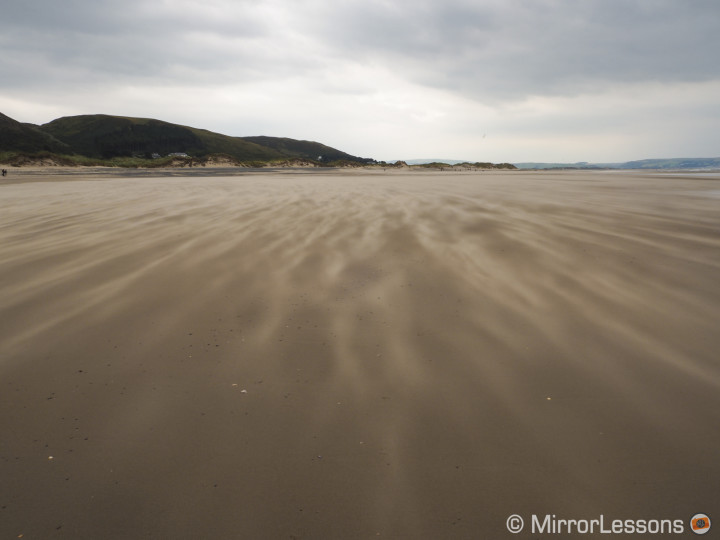
All the other E-M10 features are there, including the great Live Composite mode that allows you to record star trails directly in-camera. The Live Guide feature is also present. By pressing the dedicated function button (the default is the Fn button on the top right), the camera allows you to change settings like saturation, tint, brightness, blurred background and blurred motion. All setting adjustments are shown live on the screen. You can even access a quick menu with several tips about how to take different genres of pictures. While most of these options are amateur oriented (which is by the way also the target audience of this camera), I find it very convenient to warm the colours of the image a little by just sliding my finger up and down the LCD screen.
https://instagram.com/p/sPcjuxQeNx/
There are also two new filters in the Art Filters section: Vintage and Partial Colour. The first will add a retro look to the images in three variations.
The Partial colour filter will isolate a colour in the picture making everything else monochrome. I rarely find any of these effects good on-camera but I must say that this one works well. Once you’ve selected the effect, a circular colour scale appears, at which point you just use the main dial to move the point between the different colours to pick the one you want to isolate. 18 colours are available.

I wish that Olympus had included the new Live Guide for the Art filters as well. When you select the filter you want, you have a preview with archived photos instead of a real live preview of the shot you want to take. You can only live preview the effect once you’ve selected it and exited the art filter menu.
Below is a selection of photos taken with different art filters and the photo story mode.

The E-PL7 features the same video quality as the E-M10. It can record up to Full HD (1920 x 1080) at 30fps. The 3-axis stabilisation works with the video but the stabilisation is also enhanced with electronic image stabilisation. When activated, the image is slightly cropped.
Superior selfies, or how to bring the trend to a higher level
To start, I would like to state that I am not the type of person who takes selfies all the time. If I open up my photo library on my iPhone, I think there are four or five in total, and it’s usually because Heather made me take them! I will occasionally do it for fun, but never on a regular basis. So while the E-PL7 is presented as a superior selfie camera, I wouldn’t buy it for this feature. But the world is great because of its variety, so I tried to put myself into “selfie mode” while trying this camera, just for fun. Photography doesn’t always have to be serious, now, does it? 🙂

The smart thing with the E-PL7 is that as soon as you flip down the screen, the camera goes into selfie mode. This means that it shortens the focal length to its widest angle (if you are using the 14-42mm EZ motorized zoom), switches to e-Portrait mode (smooth skin tone rendering) and some virtual buttons appear on the screen, allowing you to select a self timer sequence or release the shutter just by touching the screen.
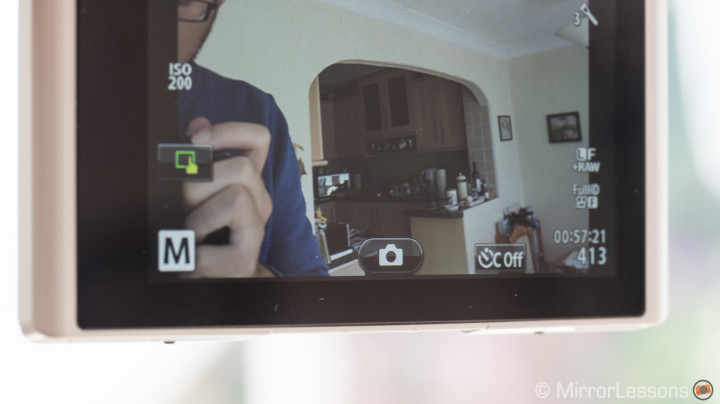
What’s missing is a virtual button on-screen when in selfie mode for video recording. You have to press the dedicated button on the rear or use the smartphone app. Of course depending on the distance between you and the camera (for example if you are including another person in the photo), you can just use the normal shutter release button or the OI.Share smartphone app to remotely control the camera.
Selfies taken on smartphones operate via a WiFi connection to the camera, and all settings can be adjusted manually. You can zoom in and out without touching the camera (with the 14-42mm EZ lens only), adjust aperture and shutter speed in real time, and preview the effect on the smartphone screen. This solution seems the most comfortable if you want to be precise with your settings, as holding the camera in selfie mode limits your access to the normal adjustments on the camera body. Unfortunately at the time of writing the OI.Share app hasn’t been updated for the E-PL7 so the sample I got cannot comunicate with the smartphone app yet.
While these new features make taking selfies certainly more fun and easy with a proper camera, the E-PL7, as with every other camera with similar characteristics, lacks something that smartphones have, and that is immediate connectivity. One of the reasons selfies have become so popular lately is because a modern smartphone allows you to take a selfie and share it online in a matter of seconds. You just need to unlock your phone screen, tap on the camera app, take the shot and choose which social media platform to upload it to.
With a proper camera, there are a few extra steps and you have to do it with two devices instead of one. This is why I see a feature like this more for people who like selfies as souvenirs of their holidays or for fashion bloggers who use selfies for their articles, rather than for those the who constantly show where they are or what they are doing on social media.
E-PL7 vs. E-PL6: what are the differences?
From a design point of view, the new Pen has a re-designed lens release button that is now more circular and matches the colour of the grip. The grip on the front also has a different faux-leather texture. It only slightly protrudes to the side and isn’t interchangeable as on the E-PL6. The front is also covered with rubber for a more appealing look.
On top, the E-PL7 has an additional dial next to the mode dial. On the rear, the playback and trash button have been moved to the bottom right, the movie button is just under the thumb grip and the two function buttons have been moved to the extreme top right. Moreover, the control pad has been slightly re-designed. The LCD now tilts down by 180° and up by about 45°, instead of only tilting up 180°.
Inside the body, the main differences in favour of the E-PL7 are as follow:
- new image processor (TruePic VII) and new sensor (same as OM-D E-M10)
- 3-axis stabilisation instead of the previous two-dimensional sensor shift
- 81 AF points instead of 35
- 2 new art filters (Vintage and Partial Color)
- Live Composite
- WiFi capabilities
- Full HD up to 24mbps (instead of 20mbps)
Conclusion

We just got the E-PL7 sample yesterday, but even after only an afternoon of shooting, I can say that despite being an entry level camera, the Olympus E-PL7 is actually a camera that features everything that either an amateur or an advanced amateur might need: the image quality is equal to what the best Olympus cameras have to offer, operation is fast, and the flexible tilting screen is good for selfies or any other use that a photographer can think of.
The E-PL7 will be available in late September 2014 and comes with the 14-42mm f/3.5-5.6 EZ lens, the same motorised zoom available with the OM-D E-M10.
We will have the camera with us for a few weeks so don’t hesitate to ask us any questions in the comment section below!








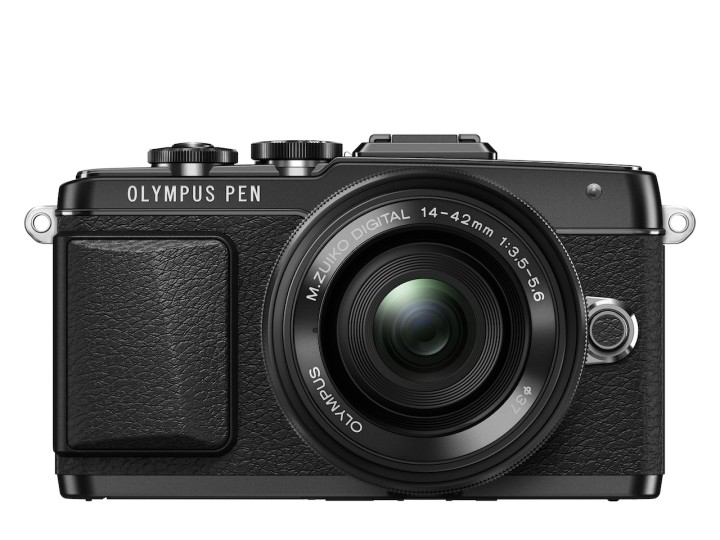












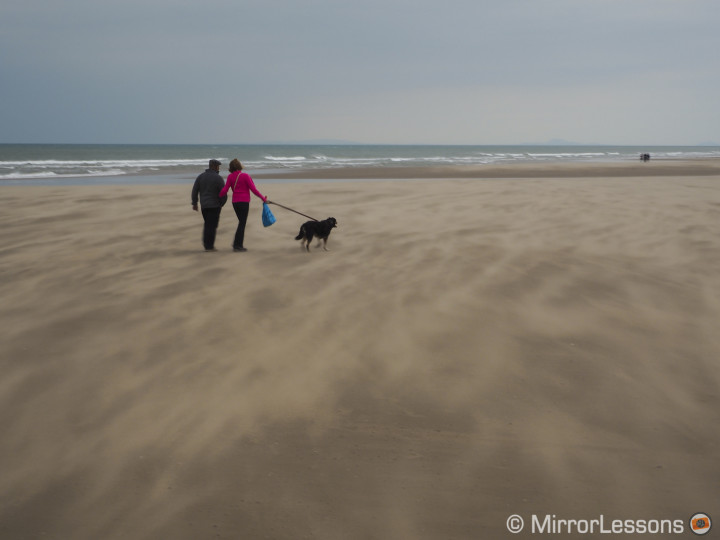








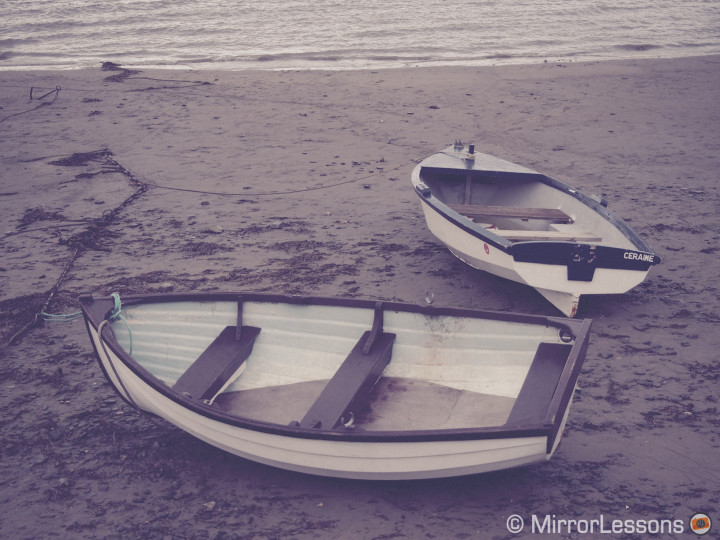








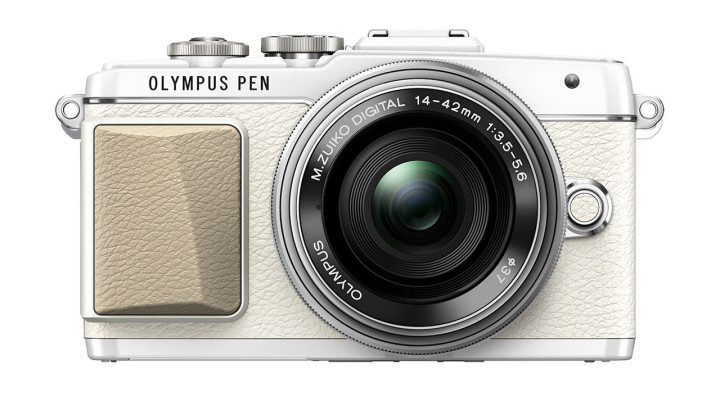






Hi Lien, that noise is probably related to the 3-axis stabilisation. Try to disable it and you shouldn’t hear it anymore. If you keep the stabilisation on that noise is normal, don’t worry about it 😉
Thanks for answering, Mathieu! I have read a lot of review on the internet. Some articles mention that X100S is not for beginners. As I have never own any SLR or mirror less cameras before, so I am thinking is X100S suitable for me. And I want to buy a mirror less camera for traveling and street snap. Do you think I should I buy X100S ?Or other cameras? Thanks!!!!
Very different cameras. I love Fuji colours and its film simulation mode. If having a non removable fixed prime lens is not a problem for you, then go with the X100s.
Hi ! EPL-7 or Fujifilm x100S? Which do u recommend? Which have a better performance on the picture quality and colour? Thank you !!!
I can’t speak specifically about the E-PL6 as I’ve never tried it but the Pens I have tried (E-P5 and E-PL7) are wonderful.
Hi, is EPL-6 a good camera?
No there isn’t a completely silent mode but the shutter is not loud.
How is the E-PL7 shutter sound? Can it be silent? Thank you.
What do you mean old time movie effect? On the E-PL7 you can use the art filters for video as well, maybe you are referring to the new vintage filter?
I am interested in the PL7’s old time movie effect, do you know where I can see a video shot with the effect?
I am a soon to be Nikon D750 user and looking for a high quality image smaller camera for carry around when a DSLR is not practical.
PS–Great site=just found it–Thanks!
Stan
You can use the zoom ring on the lens and also choose three different zoom speed inside the menu.
Hi Heather and Matthieu
I enjoyed your video review, and thanks for all the detail here on your site. Great photos too 🙂
With the power zoom lens, is it possible to zoom in and out by manually twisitng the lens, or is it done with buttons on the camera?
Thanks Bron
You can flip the screen upwards by 90 degrees, so it lies perpendicular to the camera body but it won’t go any higher than that.
Thanks for a useful review. I am looking for a good quality camera with a tilting lcd screen for street photography. Much has been made of the PL7’s selfie function. Please can you tell me if it is also possible to set inn place the lcd screen at a 80 or 90 degree angle for waist-level street photography? Thanks so much, Megan
I think Olympus is trying to target a number of niche markets, one being fashion-conscious women. I too don’t know if the selfie direction is the one to take, as most selfie takers aren’t overly concerned about image quality. The wealthy fashion community may be a little more sympathetic towards the idea. Only time will tell!
Nice to see you all enjoying the summer weather in Aberdovey 🙂
Great review of the new Pen. It looks to be the perfect option to take over from my XZ-10 as pocket camera of choice.
“Yes, they did it again!” 😉 Thank you both for this long and interesting report, Heather and Mathieu! The E-PL7 seems to be a very nice companion and the example picture speak for themselves. So espacially with small lens (eg. pencake or 25mm) it looks very smooth for using on the street and it will probably look very discreet (right word?) out there. I don’t know why Olympus puts the selfie feature so much in front (maybe due to the customers they want to address?) but I fear that this camera might often get underrated due to this “stigma”.
Anyway, it is really a beauty!! (I would prefer the silver/black version) 😉
Best regards,
Klaus
Thanks for the link. I think I’ll ask around a little more and maybe after the E-PL7 has been on the market a little longer someone will have tested the camera with the SEMA-1 Microphone adapter.
Hi Dillon, I don’t know the reasons why companies leave out such a port. For the E-PL7, it might be because it is an entry level camera. For the a6000, it makes less sense since its video capabilities are good.
Anyway, I found this on the olympus website. I can’t guarantee that it is 100% compatible but I can’t see a reason why it shouldn’t.
http://www.olympus.co.uk/site/en/c/cameras_accessories/pen_om_d_cameras_accessories/pen_om_d_accessory_port/sema_1/index.html
Mathieu & Heather,
Thanks for the review and pictures. As an enthusist, this camera has most of the features that I’m looking for at the right price point. However, I also enjoy shooting videos enough to desire a 3.5mm mic input jack. I’ve notice that some of new cameras like the E-PL7 & Sony A6000 seem to leave out this little feature.
Do companies do this as a way to cut cost or is there another method that photographers are using to capture better quality audio. I’m aware of the multipurpose hotshoe on both of these camera but on the respective company websites they don’t list a compatible mic accessory.
Thanks, Dillon
I actually preferred the old style tilt screen ,I could mount the camera on to tripod and take a viewed picture of myself ,
now with the new tilt I can not do this ,not as though a camera should be purchased on its selfie ability alone ,
I’m sure all the other added features add up nicely 3 axis ibis. Etc to make an improved proposition .
Thanks for your input Bob. The E-PL7 has the same E-M10 sensor so there is a slightly better IQ at high ISO (above 5000) but nothing drastic. It’s a great camera an can do lot more than just selfies 🙂
That would probably mean including some social sharing services right into the camera or have it run Android like some Samsung cameras. But this is why a smartphone remains more straightforward for sharing content.
So, let’s put things straight – they market this as a selfie camera but they somehow forgot to include the ability to share selfies directly via WiFi network even if the camera has built-in WiFi? And they wonder why their cameras don’t sell among general public? I wonder they still have their jobs.
Nice preview and you two are quite the cute couple working/playing together!
I love the fact that you compared the camera to my EPL6. The EPL6 is the 2nd most current EPL PENN, even though the y were not sold they in the states, (I ordered mine from Hong Kong at a GREAT price!).
I use mine as a second smaller companion to my EP5. It’s an incredibly robust camera for an entry level camera. It is a little slower to operate without the dual dials of the the higher-end bodies. Looks like the EPL7 is a “slightly” more robust (and larger!) version with richer styling (I really still like the styling of my EPL6 too, though). I think one thing you could add to you main differences is the improved Rez of the LCD..I do miss that clarity compared to the EP5!
I will not upgrade as I don’t need a selfie cam (hee hee), the image quality is the same for the EPL6 & EPL7, but it would be nice to have that higher Rez LCD and the extra axis of stabilization and the more easily accessed dial around the shutter button.. …but it looks like a very smart capable camera, perhaps Oly should focus its marketing on that as well, because it is a nice, small machine for a very experienced photographer like myself. 🙂
We’re so glad to hear that! Thank you for your encouragement…it’s lovely to know that people enjoy and appreciate the site. 🙂 If you use Google+, we’d love to see your images in our community. 🙂
As always, this is a superior site, and now I have the Olympus OM-1, and have taken thousands of wonderful images since purchased in June. (FLICKR).
This (The Pen) looks like a little beauty, and always thanks for the great images and content!
Mark Ittleman